bhofack2/iStock/GettyImages
The world of chicken can get confusing once you go beyond fryers and broilers, the types you likely use for fried chicken parts or to roast whole. Chickens labeled as roasters or stewing chickens are generally larger than fryers, but other characteristics make them more suitable for some recipes than others.
Age
To qualify as a roaster, a chicken has to be no more than 8 months old. Stewing chickens must be more than 10 months old. Stewing chickens are typically laying hens that have passed their heyday and no longer laying enough eggs to make them profitable. So, they are butchered and sold.
Weight and Size
Both roasting and stewing chickens are usually bulkier and have more fat on their bodies than other types. Roasting chickens weigh between 3 1/2 and 5 pounds. The laying hens generally used as stewing chickens weigh between 5 and 7 pounds.
Texture and Fat Content
The heavier weight and higher fat content of roasters enables you to slow-roast them without drying out the meat, which sometimes happens with smaller chickens. The extra fat gives them a soft, tender texture. The meat of stewing chickens is usually stringier and tougher than younger chickens. Stewing chickens generally have less fat than roasters and require longer cooking to tenderize them.
Cooking Methods
Roasters and stewing chickens both provide enough chicken to feed a small family. As the name implies, roasters are most suitable for slow roasting at a medium temperature for long periods. The extra fat on roasters melts during cooking and contributes to their juiciness. Stewing chickens are best suited for soups, stews and other recipes that call for long cooking in a generous amount of broth or water. Being slowly cooked in liquid breaks down their sinewy texture and helps the tender meat fall off the bone.
Suggested Uses
If you're cooking dinner for a group of four or five people, a large roasting chicken will provide plenty of meat. When gently cooked for long periods, stewing chickens create a rich, golden stock that is the perfect base for simple soups, such as chicken noodle, chicken rice, chicken vegetable or matzo ball. Remove the meat from the stewing chicken and return it to the soup pot to warm through before serving, and discard the skin and bones.
Related Articles

How Long Do You Need to Boil Large ...

Difference Between Fryer & Roaster ...

How to Tenderize a Large Old Chicken

How to Cook Chicken Wings by Boiling ...

What Do the Amish Feed Their Chickens?

Can You Roast Whole Frying Chickens?

How to Broil Chicken on the Bone

How to Cook Drumsticks With Bread ...
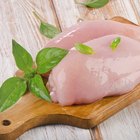
How to Cook Mojo Chicken

The Best Ways to Make a Baked Moist and ...
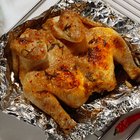
How to Get a Crispy Crust on Roasted ...
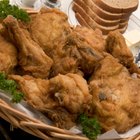
How to Par-Cook Chicken Before Frying

How to Make Crock-pot Chicken

How to Cook a Cornish Game Hen in a ...
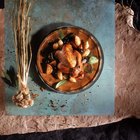
The Best Way to Cook Cornish Hens

How to Fry Bone in Chicken

How to Cook Chicken Legs With Italian ...
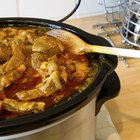
How to Cook Turkey Gizzards in a Crock ...

How to Cook Half a Breast of Chicken
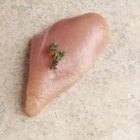
How to Cook Sauteed Chicken With White ...
References
Writer Bio
Cassie Damewood has been a writer and editor since 1985. She writes about food and cooking for various websites, including My Great Recipes, and serves as the copy editor for "Food Loves Beer" magazine. Damewood completed a Bachelor of Arts in English with an emphasis in creative writing at Miami University.